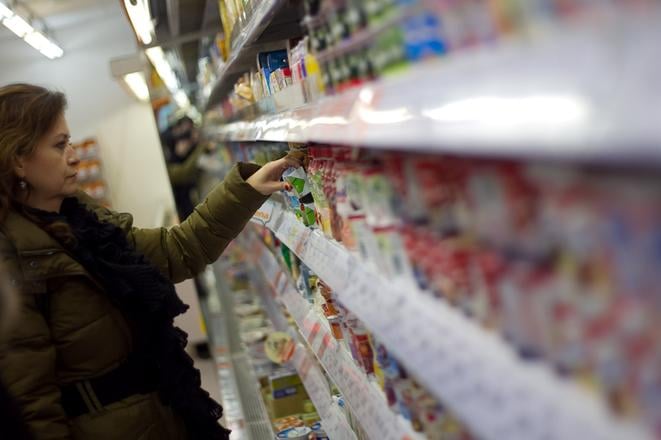The growth of consumer prices keeps accelerating in Slovakia. In January, inflation stood at 2.4 percent, which is an acceleration of the y-o-y price growth of 0.5 percent from December. January price growth was the highest in the last five years; prices last rose by the same 2.4 percent in January 2013. Prices of foodstuffs and beverages in particular rose in annual terms by 6.8 percent in January. Prices rose 0.8 percent in January compared with December, while they did not change in December versus November, the Slovak Statistics Office reported.
“The January acceleration in inflation was chiefly driven by hikes in regulated prices, especially in the housing sector, highlighted by base effect,” Ľubomír Koršňák, macroeconomic analyst of the UniCredit Bank Czech Republic and Slovakia, wrote in a memo as cited by the TASR newswire. “In addition, demand-driven inflation and year-on-year growth in food prices also accelerated, despite the fact that the hike in butter and egg prices was only moderate. Conversely, a strong base effect meant that year-on-year growth in fuel prices slowed down.”
Food prices in January went up as usual. Compared to December 2017, food prices increased by as much as 2.2 percent. Fruit and vegetable prices grew faster than usual, and pastry and pasta also recorded dynamic growth in price, probably fuelled by higher cereal prices. Conversely, year-on-year growth in prices for milk, cheese and eggs and for oil and fat (butter) decelerated.
“We expect inflation to stabilise at a level slightly above 2 percent in the next months,” said Koršňák. “The acceleration in inflation should be mainly driven by demand-driven inflation, with growing consumption creating a suitable environment for it.”
At the same time compared to previous years, inflation will not be muffled by the secondary effects of lower energy prices, he added. Conversely, fuel and food prices should have an opposite influence on year-on-year inflation, as in these areas he expects year-on-year growth in prices to slow down mainly due to the base effect and due to further corrections of high prices for butter and eggs. Towards the end of the year inflation should stand slightly below 2 percent.



 The price of 400 food products has been capped by eight retailers. (source: Sme)
The price of 400 food products has been capped by eight retailers. (source: Sme)